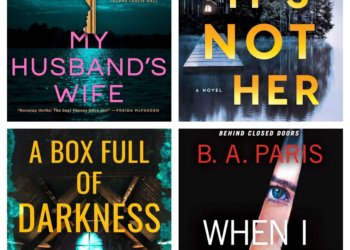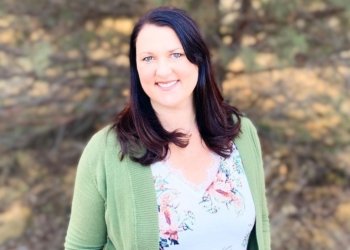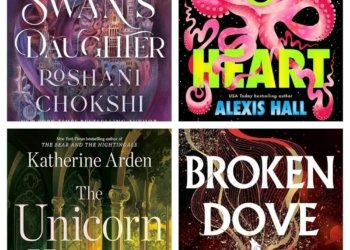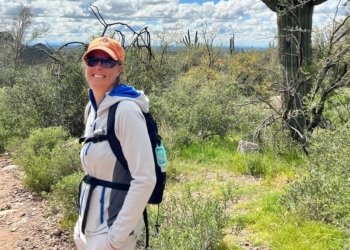No products in the cart.
A Conversation with Patricia Leavy, a Best-Selling, Award-Winning Novelist
Patricia Leavy, Ph.D., is a best-selling, award-winning novelist, arts advocate, and internationally recognized leader in research design and arts-based research.
162
SHARES2.4k
VIEWSPatricia Leavy, PhD is a novelist, sociologist, and arts advocate (formerly Associate Professor of Sociology, Founding Director of Gender Studies and Chairperson of Sociology & Criminology at Stonehill College). She is widely considered the world’s most visible proponent of arts-based research, which merges the arts and sciences. Patricia has published over 40 books, nonfiction and fiction, and her work has been translated into numerous languages. She has received over 100 book awards.
She has also received career awards from the New England Sociological Association, the American Creativity Association, the American Educational Research Association, the International Congress of Qualitative Inquiry, and the National Art Education Association. In 2016 Mogul, a global women’s empowerment network, named her an “Influencer.” In 2018, she was honored by the National Women’s Hall of Fame and the State University of New York at New Paltz established the “Patricia Leavy Award for Art and Social Justice.” In recent years, her passion has turned to penning romance novels.
Let’s get started with a quick rapid fire.

Q1. If you could be transformed into one animal, which one would you choose?
A unicorn. Maybe they’re just a myth, but it’s fun to believe in magic.
Q2. What time do you usually go to bed at night?
10 or 11.
Q3. Are you more of an introvert or an extrovert?
Introvert. People think I’m an extrovert, but there’s a reason I’ve built a life where I’m home alone in sweats playing with imaginary friends.
Q4. Who is your favorite Disney character?
Belle. That library is a dream.
Q5. Would you rather travel to the past or to the future?
The future. That’s where there’s a possibility for all things.
Q6. What is your last Google search?
Current art exhibits in New York City.
Q7. What object do you misplace or lose the most?
My reading glasses. I stash pairs of them everywhere. It’s my only hope.
Q8. What is the kindest thing someone ever did for you?
My husband, back when we were still dating, told me to write a novel. He’s supported this dream of mine ever since.
Q9. Learn by watching or learn by doing?
Watching. I’m a good observer. It comes from being shy and definitely helps my writing. “Funny how when you find your people, life just gets easier, even when it’s hard.”Patricia Leavy, Shooting Stars Above
Q10. Expensive presents or homemade presents?
Expensive presents and homemade cards. A construction paper heart glued onto a doyly and I’m all in.
Q11. What is one missed opportunity that you wish you could have a second chance at?
Spending more time with my grandmother when she was dying of cancer. I was only eight and didn’t realize she was dying. The last time I saw her in the hospital, I rushed the visit to get home and play with a new toy. I had no idea I would never see her again.
Q12. What is not a big deal to most people but is torture to you?
Numbering my chapters. I’m slightly dyslexic and numbers are torture. Writing a book, no problem. Numbering the chapters, full-on panic attack.
It’s time for a more detailed conversation, Patricia.
You’ve answered our rapid fire so well, Patricia. Now, it’s time for our readers to know more about the person behind the book.
Q. Tell us something about yourself that’s going to make us wonder more about you.
Before I became a novelist got my PhD in sociology and had a career as a professor and nonfiction author. My two main areas of expertise were the arts and women’s relationships. As a romance novelist, my background still comes in handy. Each of my novels has an arts narrative interwoven into the love story. While I write feel-good beach reads, each novel also contributes to a philosophy of the arts and a philosophy of love. I view my entire body of work, fiction and nonfiction, as a big study in love and art.
Q. Well, that will keep you in our thoughts. So, what books did you grow up reading?
When I was in elementary school, I discovered a book of short stories called Arriving at a Place You’ve Never Left by Lois Ruby. The stories were all about very grown-up topics, such as teen pregnancy. I was engrossed. I loved reading about relationships, love, and the lives of girls and women. Later, I read a lot of novels by Jackie Collins and Danielle Steel. Those were the kinds of women’s fiction and romance novels I knew about. I also loved Nora Ephron. She was smart and used humor well. Eventually I discovered edgier novels and books that merged fiction and nonfiction. Authors like Kathy Acker, Jeanette Winterson, Laurel Richardson, Toni Morrison, James Baldwin, Carolyn Ellis, Simone de Beauvoir.


Q. Interesting. What, to you, are the most important elements of good writing?
I love it when an author has their own style. Something unique and original. A strong voice. A fingerprint. In fiction, multidimensional characters and dialogue that rings true are also important.
Q. Do you hide any secrets in your books that only a few people will find?
Yes! Sometimes I use anagrams. So the initials of character’s name, for example, will represent someone. Other times I transform something or someone from real life into a fictional character or scenario. I change anything revealing. I also throw in nods to jokes with friends, things people have said to me, or memorable experiences I’ve had with loved ones. “Perhaps the yellow brick road was really just a trail of gold dust connecting one dream to another.”Patricia Leavy, Hollyland
Q. Now comes the most anticipated question that every author must answer. How do you process and deal with negative book reviews?
It’s challenging. There’s nothing that means more to me than my books. I spend my whole life on them. I write seven days a week, including holidays, weekends, and vacations. My novels come from the deepest part of my soul. So of course, it’s painful when people don’t enjoy them. That said, not every book is for every reader. I honestly don’t really think it’s any of my business what people think about my books. As an artist, it’s important to develop your own relationship with your work and allow others the same. Never believe or be beholden to your own press—good or bad. It’s the death of creativity.
Q. What comes first for you — the plot or the characters — and why?
Always characters. My novels are character-driven. I see and hear them in my mind’s eye. As I get to know them, the plot reveals itself. For me to spend all my waking hours with a character, I have to want to. I need to see their potential for growth or something positive.
Q. How do you develop your plot and characters?
It never happens the same way twice, which is why I’m still so in love with writing. Inspiration comes in all sorts of ways. Sometimes I’ll see a movie or hear a song or see a painting and I’ll get an idea. Other times there’s a topic I’m interested in exploring and I stew on it. Sometimes a current event will spark an idea. The characters always come first and then I develop the story around them. I usually create a summary description of the primary characters and the people in their lives and then sketch out the main plot points. As I write and see how things evolve, I edit and expand the outline.

Q. What does literary success look like to you?
Getting to do the thing I love most: writing. I wake up every day and live my dream. Being a full-time author is a privilege. Few people get to spend their lives doing what they love most. As long as I’m able to write and publish my books, I consider myself successful.
Q. Let’s talk about your book. Tell us about it. No major spoilers.
Shooting Stars Above is a love story. It’s about the power of love to help us heal our visible and invisible wounds, and the struggle to balance darkness and light in our lives. The story follows world-famous inspirational novelist Tess Lee and counterterrorism agent Jack Miller. Both have given so much to others, but haunted by past violence, neither has been able to find personal happiness. The night Tess and Jack meet, their connection is palpable. She examines the scars on his body and says, “I’ve never seen anyone whose outsides match my insides.” From there, an epic romance begins. There’s a fun friendship group of supporting characters too. Like the journey to balance darkness and light in their lives, the story has some tough bits as well as moments of laughter. Really, it’s a book about love in all forms—romantic, friendship, and learning to love ourselves.
Q. What part of the book did you have the hardest time writing?
Without giving anything away, something traumatic happens in the book and Tess falls into a dark emotional state. Jack, and her best friend Omar, feel her pain too. It wasn’t tough to write in so far as I knew what was going to happen and how to get it down, but emotionally, it was intense.
Q. Would you and your main character get along?
Yes. I admire her so much. Tess is incredibly kind and generous. She’s also smart and wickedly funny. Add to that, she’s an author and she champions the arts. I would love to hang out with her. She’s traveled all around the world, gone to galas hosted by royals, and befriended A-list megastars, so I wouldn’t mind accompanying her on those trips either. I love a good celebrity sighting.
Q. What are the essential characteristics of a hero you can root for?
Someone who treats others well even if they aren’t always so kind to themselves. Hurt people do not need to hurt people. To me, heroes are sensitive and compassionate. They also evolve. They may be flawed like the rest of us, but they grow and change. “There is only darkness and light, and love is the bridge between them.”Patricia Leavy, Shooting Stars Above
Q. Let’s talk about the process of writing. When you’re writing an emotional or difficult scene, how do you set the mood?
I try to write the tough scenes when I’m in a good mood. If I write them when I’m already feeling down, it can be a rabbit hole of depression. Sometimes people think I write happy books when I’m happy and sad books when I’m sad, but it’s usually the opposite.
Q. What was your hardest scene to write?
I didn’t write the book in order. I wrote it as a bunch of scenes which I stitched together when it was done. In fact, I wrote the last chapter first and the first chapter last. So, the hardest scene to write was the opening scene when Tess and Jack first met. It was hard because I knew I’d be done after I wrote it. I loved writing this book more than anything I had done before so letting go wasn’t going to be easy. And clearly it wasn’t because I ended up writing a series of romance novels based on these characters—six so far. We’ll be releasing a Celestial Bodies Romance every spring for many years.
Q. It’s been fun. Now, before we wrap this up, do you have any suggestions to help me become a better writer? If so, what are they?
Read things outside of your genre. Expose yourself to diverse artists and storytellers. Consider narrative in other artistic mediums, not just in novels. For example, how singer-songwriters structure songs or how playwrights structure plays.
UPDATE:- Her book, Shooting Stars Above will be available on Amazon starting March 18, 2025.
Related Posts
10 Most Anticipated Thriller Books of 2026
If you’re a book lover with a penchant for suspense, then get ready to mark your calendars! As we look...
A Conversation with Kerry Chaput, a Historical Fiction Author
Kerry Chaput is an award-winning historical fiction author who writes about daring women with loads of adventure and a splash...
10 Most Anticipated Science Fiction and Fantasy of 2026
The world of science fiction and fantasy is ever-evolving, and as we look ahead to 2026, there's an electrifying lineup...
A Conversation with Corey Seemiller, an Award-Winning Professor and Author
Corey Seemiller is an award-winning professor of leadership and global generational expert. She has authored several books and articles and...
About Us

Trenzle
Where Trends are made and discovered
Trenzle is your official source of discovering the latest people, work, and ideas that deserve to trend. Discover Authors and their books, Creators and their work, People and their opinions, and Stories from around the globe.
Learn more
Latest Posts
10 Most Anticipated Thriller Books of 2026
December 10, 2025
Trenzle Top 10 Trending Free Book Deals for December 05, 2025
December 5, 2025
A Conversation with Kerry Chaput, a Historical Fiction Author
December 1, 2025
Categories
© 2023 Trenzle - Online Author News & Magazine









